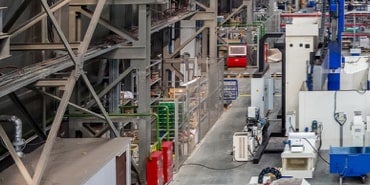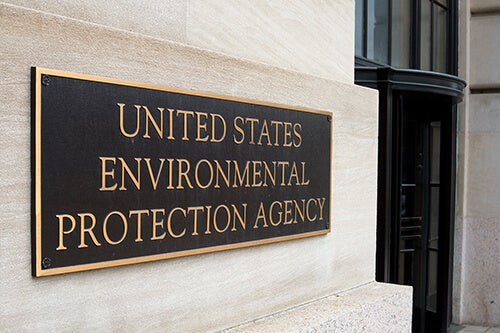If your company builds anything with electronics, batteries, or complex parts, you’re using materials like gold, tungsten, tantalum, or tin — commonly called the 3TGs. The mining of these conflict minerals is tied to serious human rights risks in certain parts of the world. Over time, the list of “high-risk” minerals has grown to include cobalt, lithium, and mica, too.
Governments, investors, and consumers are all paying closer attention to where materials come from. If your company can’t show that it sources minerals responsibly, it may face fines, supply chain disruption, and lost business. And the expectations are only getting higher in 2025.
What’s New in Conflict Minerals Compliance in 2025?
Today’s metals market is complex and turbulent. New conflicts and sanctions mean that manufacturers need to update their mineral reporting programs for 2025. They will need accurate Reasonable Country of Origin Inquiry (RCOI) data to show that they’re compliant and sourcing responsibly.
Here are some of the key changes in the conflict minerals landscape for 2025:
- Conflict is intensifying in the eastern Democratic Republic of the Congo (DRC). The M23 rebel group has increased activity in the mineral-rich region, and it’s having an impact on mineral supply chains.
- In April 2025, Assent identified 16 smelters that are connected to international sanction lists like the U.S. Office of Foreign Assets Control’s SDN list, EU Financial Sanctions List, and UK Sanctions List.
- A smelter has been added to the Uyghur Forced Labor Prevention Act (UFLPA) Entity List. What’s notable here is that the smelter meets the requirements of the Responsible Minerals Initiative (RMI) Responsible Minerals Assurance Process (RMAP) audit. So it appears on the surface that they are safe to work with. However, products containing minerals sourced from that smelter would be non-compliant with UFLPA.
So how do you stay ahead of these changes? You build a due diligence program that uses RCOI data instead of just smelter compliance data.
Step 1: Know What’s in Scope (& What Isn’t)
Not every supplier you work with is part of the conflict minerals reporting equation. You need to figure out which of your parts, products, and suppliers are actually relevant to responsible minerals rules.
For example:
- A gasket or o-ring supplier? Not in scope.
- A circuit board supplier for your automotive components? They’re most likely using a conflict mineral in the soldering and/or circuits.
- A battery manufacturer? Could be in scope if you are voluntarily reporting on cobalt.
Work with your engineering and procurement teams to do a proper scope analysis. This cuts down the noise and saves time by helping you focus only on the suppliers that are relevant to your conflict minerals reporting program.
Step 2: Build a Compliance Plan
Compliance isn’t just about ticking a box. You need a plan that outlines out every step — what you’re checking, how you’re checking it, and who’s responsible. That includes:
- Mapping your minerals supply chain
- Setting due diligence standards based on global guidance, like the Organisation for Economic Co-operation and Development (OECD), plus your own company’s goals around voluntary reporting, such as for cobalt
- Assigning clear roles to team members
- Communicating expectations to suppliers. This is typically done through a supplier code of conduct
- Monitoring and planning for regulatory updates. Any good compliance program keeps a proactive eye on changes to reporting requirements and sanctioned party lists that could affect your compliance
With Conflict Minerals Reporting Requirements, Smelter Compliance Isn’t Deep Enough
Too often, companies equate responsible mineral sourcing with smelter and refiner due diligence alone. While these supply chain entities play a critical role, legislation like Section 1502 of the Dodd-Frank Act makes it clear: The real requirement is knowing the reasonable country of origin of the minerals, not just the third-country location of processing facilities. This is where RCOI data comes into play, and it’s a key component of any effective compliance strategy.
Despite this, many manufacturers stop at smelter conformance, building programs that meet the surface-level demands of conflict mineral reporting without pushing deeper. The result? Gaps in due diligence that leave companies exposed.
Think back to that RMAP-compliant smelter listed under the UFLPA Entity List. If you’re only using RMI compliance data, your program won’t flag this smelter as a compliance risk. But if you have RCOI data layered on top, plus some monitoring of supplier beneficial ownership, you’d see how this supplier is not compliant with your market access requirements.
True responsible sourcing requires engagement across the value chain. That means working with suppliers to trace materials back to their origin and leveraging public resources — like corporate registries — to identify the ultimate beneficial ownership and compliance history of upstream sources. It’s a more rigorous path, but one that delivers the transparency regulators expect and stakeholders demand.
Step 3: Find the Right Supplier Contacts
Getting supplier data starts with reaching the right person, which isn’t always easy. Procurement teams may only have general inboxes or sales contacts. You’ll need to identify a contact who knows specifically what’s in the product. That could mean browsing the supplier’s website, submitting contact forms, or going back and forth until you find the right individual.
Once you do, log it in a shared system that other teams can access. Don’t send your coworkers on a wild goose chase every time you need product data from that supplier.
Step 4: Ask for the Data (Clearly)
When you’re ready to collect responsible minerals data, make it easy for suppliers to respond.
Send a clear request that explains:
- What data you need
- How and where to submit it (e.g., a specific template or online portal)
- When you need it by
- Where they can go for help
Many suppliers may be hearing about these requirements for the first time. Make sure they have access to educational materials and a contact person for questions. If you’re using a third-party platform or vendor to help manage the request, make that clear so suppliers aren’t confused.
The CMRT: A Critical Tool for Conflict Minerals Due Diligence
The Conflict Minerals Reporting Template (CMRT) is a standardized, industry-backed Excel template used to collect data on the sourcing of 3TGs from across the supply chain. It plays a key role in helping companies comply with regulations like Section 1502 of the Dodd-Frank Act by gathering information about smelters and the countries of origin of the minerals used in their products.
Companies distribute the CMRT to their suppliers, who complete and return it with details about the smelters and refiners in their supply chains. This data helps organizations identify potential sourcing risks, trace minerals back to their origins, and ensure their supply chains are conflict-free.
Unlike company-created surveys, the CMRT provides a consistent and comprehensive approach to data collection, ensuring critical information isn’t missed. Relying on anything less can leave companies exposed to regulatory gaps, reputational risk, and non-compliance with industry expectations.
Step 5: Track Responses & Follow Up
Suppliers won’t all respond with the same level of accuracy. Some will send quality data, some will send partial info, and some won’t respond at all. Here’s how to manage it:
- Keep all supplier responses in one place
- Track who’s responded and what they’ve provided
- Set reminders for follow-ups
- Escalate if there’s no response after multiple tries
Even if you’re only dealing with more than just a few suppliers, manual tracking can get messy fast. This is where supply chain sustainability management software becomes more than a nice-to-have — it’s essential to keeping up with reporting deadlines.
Step 6: Review, Report, Repeat
As data comes in, don’t wait until the end of the reporting cycle to start analyzing it. Look for red flags early so you can act fast. Once the reporting deadline arrives, you should be ready.
And it doesn’t stop there. Regulations are expanding. Beyond the 3TGs and cobalt, more than 30 minerals have been flagged by the OECD as high-risk. If you’re only collecting data for the bare minimum right now, it’s time to think bigger.
Responsible Sourcing Is an Ongoing Process
Conflict minerals compliance is a business reality directly tied to your revenue. Your customers want to know where your materials come from. Your investors expect transparency. Your brand depends on trust.
The companies that get ahead of these requirements don’t just avoid penalties — they build stronger, more resilient supply chains. That starts with a clear plan and the right tools.
Assent’s Responsible Minerals — Conflict Minerals solution is built to support both current and emerging regulatory requirements for 3TG sourcing. From supplier and smelter risk assessments to CMRT roll-ups and RCOI data collection, it takes the complexity out of compliance. With access to the most up-to-date RMI smelter data and Form SD reporting templates, our conflict minerals reporting solution streamlines your reporting process from end to end.
For deeper insights and expert guidance on everything you need to know about implementing a bulletproof conflict minerals reporting and responsible minerals sourcing program, download Assent’s The Conflict Minerals Handbook: Your Guide to Compliance.
FAQ: Conflict Minerals Compliance in 2025
What are conflict minerals and why are they important in 2025?
Conflict minerals include tin, tungsten, tantalum, and gold (3TGs). Many companies also have responsible sourcing programs for cobalt, lithium, and mica. In 2025, due to rising global conflicts and new sanctions, sourcing these minerals responsibly is more critical than ever to avoid non-compliance and supply chain risks.
What’s new in conflict minerals compliance for 2025?
Key updates include increased conflict in the eastern Democratic Republic of the Congo (DRC), new sanctioned smelters, and the addition of an RMAP-compliant smelter to the UFLPA Entity List. Companies need RCOI data, not just smelter compliance, to stay ahead.
What is RCOI and why is it essential for compliance?
RCOI stands for Reasonable Country of Origin Inquiry. It ensures companies trace minerals back to their source, not just the smelter. In 2025, RCOI data is crucial to meeting legal requirements and avoiding hidden compliance risks.
What is the CMRT and how is it used?
The Conflict Minerals Reporting Template (CMRT) is a standardized form used to gather data on 3TG minerals from suppliers. It helps companies comply with regulations like the Dodd-Frank Act by identifying smelters and countries of origin.
How can companies build a strong conflict minerals compliance program?
Companies should perform a scope analysis, create a clear compliance plan, collect accurate supplier data using the CMRT, and monitor regulatory updates. Tools like Assent’s solution support reporting, smelter risk assessment, and RCOI data collection.
Looking to improve your conflict minerals reporting program? Book a demo of Assent’s platform today.














